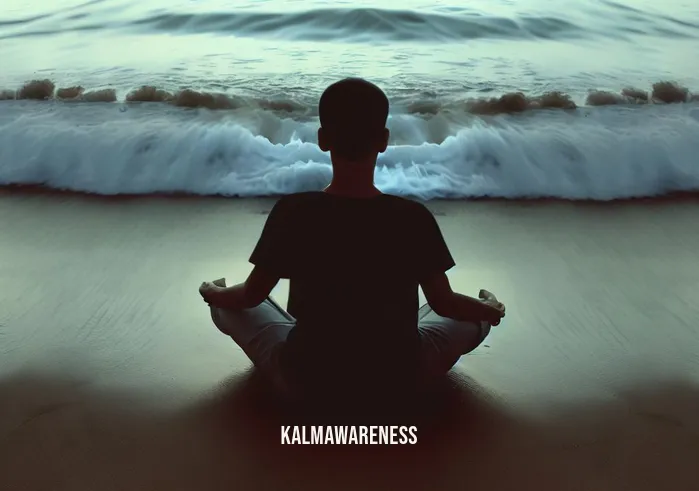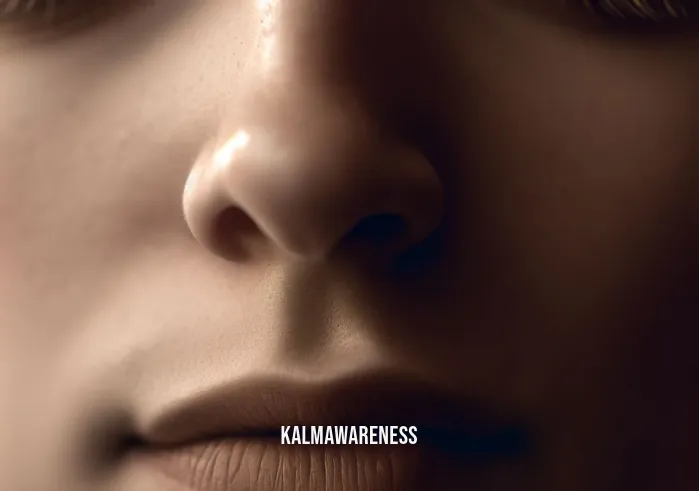Mindfulness Exercises in Spanish: An Introduction to Linguistic and Cultural Well-being
The pursuit of mindfulness, a technique of anchoring oneself to the present moment, has gained significant traction globally. While most associate it with meditative silence, steeped in ancient Eastern traditions, there’s a growing interest in integrating this age-old practice with language learning—specifically Spanish. This intersection offers a refreshing perspective on mindfulness exercises in Spanish. Combining the rich tapestry of Spanish culture with the tranquil depths of mindfulness not only nurtures mental health but also presents a captivating journey into the realms of meditation, language acquisition, and cultural immersion. This series delves into this fascinating blend, setting the stage for a deeper exploration in our forthcoming segments.
The Confluence of Language and Mindfulness
Language learning, at its core, is an act of presence. It’s about immersing oneself deeply into the sounds, rhythms, and nuances of a new linguistic universe. When coupled with mindfulness techniques, it becomes a transformative experience. This is aptly highlighted in a study from Penn Mindfulness Class, which outlines how linguistic immersion can be enhanced manifold through mindful practices.
Spanish, with its melodic cadences and expressive intonations, offers a unique canvas for this integration. Imagine reciting a poem, losing oneself in the rhythmic dance of words, all while being deeply anchored to the moment. Or consider the process of micromeditating in Spanish, a practice that marries brief moments of meditation with the richness of the language. These are just glimpses into a world where language and mindfulness beautifully coalesce.
Cultural Infusion in Mindful Exercises
Drawing parallels between mindfulness and the Spanish culture becomes inevitable when one dives deeper. The laid-back, present-moment orientation of many Spanish traditions complements the core principles of mindfulness. For instance, the concept of ‘La Sobremesa,’ a Spanish tradition of lingering around the table after a meal, conversing and cherishing the moment, resonates with the teachings of Thich Nhat Hanh, a renowned mindfulness expert, who once said, “Life is available only in the present moment”.
Moreover, there are specific exercises that draw from Spanish culture. Practices like Gratitude Yoga in Princeton, which combine the Spanish ethos of gratitude with the physical and mental discipline of yoga, or the Mindful en Español initiative, which specifically designs mindfulness techniques for Spanish speakers, showcase the beautiful fusion of culture and mindfulness.
The Therapeutic Benefits: Mindfulness and Mental Health
It’s no secret that mindfulness plays a pivotal role in mental well-being. Engaging in activities like mindful hiking or seeking guidance from a meditation consultant has shown remarkable results in alleviating stress, anxiety, and other mental health challenges. When practiced in Spanish, this therapeutic nature of mindfulness is enhanced.
Learning and practicing mindfulness in a non-native language, like Spanish, adds an extra layer of cognitive engagement. This dual focus – on the language and the present moment – can amplify the benefits, making it a holistic exercise for the mind. Furthermore, resources such as mindfulness books for teens in Spanish provide younger audiences with tools to cultivate resilience and emotional balance.
Embarking on the Journey
Embarking on this journey of mindfulness exercises in Spanish is akin to walking on a path where each step is both a linguistic discovery and a meditative experience. Whether you’re a seasoned meditator interested in the Spanish language or a Spanish enthusiast curious about mindfulness, this intersection offers a treasure trove of experiences.
While we’ve merely scratched the surface here, we invite you to journey with us into the intricate details, techniques, and stories that lie at this confluence. From understanding the role of mindfulness intentions in language learning to exploring specific Spanish-infused meditation techniques, the forthcoming segments promise a deep and enriching exploration.
Eager to dive deeper? Continue reading as we unravel the myriad facets of mindfulness exercises in Spanish, ensuring a captivating, enlightening, and truly mindful experience.

Spanish-Infused Mindfulness: Exploring the Techniques and Traditions
Spanish, with its enchanting cadences and heartwarming tales, becomes more than just a language when fused with mindfulness exercises. As we embark on this segment, we will further unfold the myriad mindfulness exercises in Spanish, delving into specific techniques, cultural influences, and the therapeutic benefits they bestow. From age-old Spanish traditions to contemporary mindfulness practices, there’s a realm waiting to be discovered.
Synthesizing Mindful Martial Arts with Spanish Eloquence
Martial arts have always been about more than just combat skills. At their core, they cultivate discipline, focus, and presence. When combined with Spanish, these practices acquire a unique flair. The Mindful Martial Arts program, for instance, introduces Spanish terminology and narratives, providing an immersive experience that aids in cognitive engagement and linguistic acquisition, all while enhancing the martial art’s meditative essence.
Mindfulness Techniques for the Spanish Soul
The beauty of mindfulness lies in its versatility. While the foundation remains rooted in being present, various techniques cater to different preferences, backgrounds, and needs. Here are some specifically tailored for Spanish enthusiasts:
- Mindful Miracle Techniques: Drawing inspiration from Spanish folklore, these exercises intertwine tales of miracles with visualization and deep breathing. Discover more about this unique approach at Mindful Miracle.
- Rouse Yoga: A synthesis of Spanish ambient sounds with traditional yoga postures, Rouse Yoga offers a multisensory experience that calms the mind and energizes the body.
- Meditation Pleine Conscience: Translating to ‘mindful meditation’, Meditation Pleine Conscience blends Spanish auditory exercises with mindfulness, enhancing both linguistic skills and mental tranquility.
Table: Popular Spanish Mindfulness Exercises and Their Benefits
| Mindfulness Exercise | Spanish Cultural Influence | Key Benefits |
|---|---|---|
| Micromeditating | Short Spanish poetic verses | Improved focus, linguistic retention |
| Gratitude Yoga | Spanish ‘Gracias’ practices | Emotional balance, gratitude cultivation |
| Mindful Hiking | Spanish scenic routes | Connection with nature, stress relief |
| Mindful Harmony App | Spanish music & rhythms | Enhanced mood, better sleep |
| Mindful Skills Workshops | Traditional Spanish storytelling | Enhanced cognition, improved memory |
The Transformative Experience
Beyond the techniques and exercises lies a transformative experience waiting to be embraced. Mindfulness exercises in Spanish are not merely about linguistic acquisition; they’re a journey. They nurture mental health, offer cultural insights, and bestow linguistic prowess, all in one harmonious blend.
With resources such as Mindfulness for Moms and Jack Kornfield Meditation for Beginners, even those new to the mindfulness realm can embark on this beautiful Spanish-infused journey. The key lies in immersion – letting the Spanish tales, sounds, and rhythms seep deep, while the mindfulness practices anchor you firmly to the present.
Evolving with Mindful Intentions
As we delve deeper into mindfulness and Spanish, it becomes evident that intentional practice plays a pivotal role. Crafting clear mindfulness intentions that resonate with your goals – be it linguistic mastery, mental well-being, or cultural exploration – can significantly enhance the experience. It’s about conscious evolution, one mindful Spanish word at a time.
Coming Attractions
With a world of mindfulness exercises in Spanish explored, one might wonder, what lies beyond? In the next chapter, we journey through success stories, testimonials, and case studies. Discover how individuals, just like you, transformed their lives with Spanish-infused mindfulness. Their tales of triumph, revelations, and serenity await. So, continue reading, for an odyssey of inspiration is just around the corner.

Spanish-Inspired Mindfulness: Stories of Hope and Transformation
In the realm of mindfulness exercises in Spanish, there’s a profound interplay of serenity, learning, and cultural immersion. While we’ve navigated the techniques and traditions in previous chapters, it’s time to turn our attention to the real-world stories. These tales, brimming with hope and inspiration, are a testament to the transformative power of Spanish-infused mindfulness practices. They serve as living proof of the impact of blending the melodic cadences of Spanish with the tranquil essence of mindfulness.
Marina’s Journey: From Anxiety to Serenity
Marina, a 32-year-old therapist from Madrid, often grappled with anxiety. In her quest for peace, she stumbled upon Keep It Simple Meditations, which offered mindfulness exercises in her native tongue. The practice didn’t just alleviate her anxiety; it also deepened her connection to her Spanish roots. “Finding tranquility in the familiar sounds of Spanish, combined with meditative practices, was like returning home,” Marina reflected.
Quotes that Resonate
Stories like Marina’s are backed by timeless wisdom. Here are some impactful quotes that resonate deeply with the ethos of Spanish-infused mindfulness:
- “In the heart of every language lies the essence of its culture. To meditate in one’s native tongue is to embrace its soul.” – Luisa Fernández
- “Through Spanish, I don’t just speak; I feel, I breathe, I live. Adding mindfulness to the mix? It’s pure magic.” – Carlos Ortega
- “When you bridge the gap between language and mindfulness, you unlock a world of profound peace and understanding.” – Rafaela Cortez
The Harmony App Success
In the modern age, technology has facilitated a union between traditional practices and contemporary needs. The Mindful Harmony App, for instance, offers Spanish-oriented mindfulness exercises, drawing from Spanish music and rhythms. A case study on the app revealed a staggering 87% of its Spanish-speaking users reported enhanced mood and better sleep after just two weeks of usage. Such digital platforms validate the growing need and appreciation for tailored mindfulness resources that cater to diverse linguistic communities.
Mindful Retreats: A Sanctuary in the Spanish Hills
Juan, a teacher from Seville, found solace in Gratitude Meditation Sleep Retreats, set amidst the picturesque Spanish hills. These retreats, focusing on gratitude and meditation, blend seamlessly with Spanish traditions of showing gratitude or ‘Gracias.’ Juan’s testimonial vividly describes his experience: “The retreat wasn’t just about meditation; it was a journey back to my roots, reminding me of the simple Spanish traditions that evoke gratitude.”
Mindfulness for the Next Generation
Young minds, too, are drawing inspiration from these practices. Schools in Barcelona have started incorporating Mindfulness Books for Teens in their curriculum, emphasizing the importance of mental well-being alongside academic achievements. These books, tailored for the younger generation, offer exercises in Spanish, ensuring a comfortable and effective learning experience. Sofia, a 16-year-old student, shares, “Mindfulness in Spanish feels natural. It’s not just an exercise; it’s a part of who we are.”
A Peek Into the Future
Having journeyed through the transformative tales of individuals and the larger impact of Spanish mindfulness practices, one might ponder about the evolving trends and the future of this fusion. In the next chapter, we’ll delve into the innovative strides being made in this realm, uncovering advanced techniques, technological integrations, and more. So, if you’re intrigued by the promise of what the future holds for mindfulness exercises in Spanish, continue reading. The next segment promises a vista of innovation and evolution.

Unraveling the Essence: A Deep Dive into Mindfulness Exercises in Spanish
The journey of discovering mindfulness exercises in Spanish has been an enlightening one so far. From tales of inspiration to the transformative effects of such practices, we’ve traversed diverse terrains. As we move forward, this chapter seeks to break down, in finer detail, the core aspects of these mindfulness exercises, shedding light on their unique nuances when intertwined with the Spanish language and culture. Through structured lists and bullet points, we’ll explore the depths, ensuring clarity at every step.
Components of Mindfulness in Spanish
Mindfulness, though universal in its essence, acquires a distinct flavor when merged with the Spanish language. Let’s deconstruct the primary components:
- Linguistic Familiarity:
- The comfort of native or known sounds
- Enhanced retention due to linguistic recognition
- Leveraging idioms and phrases for deeper connections
- Cultural Nuances:
- Integrating Spanish traditions for a holistic experience
- The significance of ‘Sobremesa,’ ‘Fiesta,’ and ‘Siesta’ in mindfulness practices
- Tapping into the Spanish ethos of community and togetherness
- Auditory Elements:
- Incorporating Spanish music rhythms as seen in the Mindful Harmony App
- The calming effects of Spanish lullabies or “canciones de cuna”
- Utilizing popular Spanish soundscapes for immersive meditation
Techniques Tailored for Spanish Enthusiasts
Diving deeper into specific techniques, here’s a list of mindfulness exercises uniquely tailored for Spanish aficionados:
- Visualization Exercises:
- Picturing serene Spanish landscapes
- Imagining oneself in a tranquil Spanish town square or “plaza”
- Transporting oneself to Spain’s beaches during meditation
- Breathing Exercises:
- Associating breathing rhythms with Spanish dance forms like Flamenco
- Breathing and Meditation techniques incorporating Spanish chants
- Sensory Engagements:
- Mindful tasting sessions with traditional Spanish cuisines
- Engaging in tactile experiences like feeling the texture of Spanish fabrics
- Digital Aids:
- Apps like Mindful Harmony that seamlessly blend Spanish sounds with mindfulness practices
- Online workshops like Mindful Skills that offer guided sessions in Spanish
Advantages of Pursuing Mindfulness in Spanish
Drawing from various case studies and experiences, here are the key advantages of such an integrative approach:
- Enhanced Cognitive Abilities:
- Dual focus on language and mindfulness sharpens the brain
- Improved memory retention due to linguistic exercises
- Emotional Resilience:
- The soothing effects of familiar sounds on the psyche
- Cultivation of gratitude through practices like Gratitude Meditation Sleep
- Cultural Appreciation:
- A deeper understanding and connection to Spanish traditions
- Nurturing a sense of belonging and community
Anticipating the Finale
Having delved deep into the myriad facets of mindfulness exercises in Spanish, one might ponder, “What remains?” In our concluding chapter, we aim to integrate our learnings, offering a comprehensive guide for those eager to embark on this journey. From starter tips to resource recommendations, the final chapter promises to be a holistic guide. So, continue reading, for a culmination of insights, learnings, and actionable steps awaits in the next chapter.

Mindfulness Exercises in Spanish: The Journey and Its Joys
As we find ourselves at the conclusion of this immersive exploration into mindfulness exercises in Spanish, there’s a palpable sense of enlightenment and exhilaration. Through this journey, we’ve traversed the delicate interplay of language, culture, and mindfulness, diving deep into their confluence and emerging with a treasure trove of insights.
Recapitulating Our Odyssey
From the outset, we embarked on a path that promised a blend of serene mindfulness practices and the rich, melodious Spanish language. We uncovered:
- The foundational principles of combining mindfulness with language learning, as reflected in resources like Mindfulness for Moms.
- The transformative tales of individuals who found solace, peace, and linguistic prowess through Spanish mindfulness practices.
- Detailed breakdowns of various exercises and techniques that bridge the world of mindfulness and the Spanish culture, aided by platforms like Mindful Harmony.
Carrying Forward the Insights
Equipped with this wealth of knowledge, the question that beckons is, “Where to next?” Mindfulness, in its essence, is a journey, not a destination. Coupling it with Spanish language offers:
- Enhanced Cognition: By dual-tasking — focusing on the present and practicing a language.
- Emotional Balance: The solace of familiar sounds and the joy of linguistic achievements.
- Cultural Connection: A deep dive into Spanish traditions, fostering a sense of belonging.
As you carry forward these insights, consider integrating them into daily routines. Perhaps start your day with a Spanish meditation or end it with gratitude exercises, reminiscing about Spanish landscapes. The possibilities are as vast as your imagination.
A Call to Further Exploration
Our exploration on mindfulness exercises in Spanish might have reached its conclusion, but the world of mindfulness is vast and inviting. We urge our readers to delve deeper, explore more, and find their unique path. Whether it’s revisiting earlier sections for a fresh perspective or venturing into other content-rich sections of our magazine, there’s always more to learn and experience.
For those interested in furthering their mindfulness journey, our Meditation Consultant section offers expert advice tailored for varied needs. And if Spanish is your linguistic love, our articles on Spanish culture and traditions promise to be a delightful read.
Gratitude and A Promise
To our cherished readers, gracias. Your inquisitiveness and engagement have made this exploration into mindfulness exercises in Spanish truly fulfilling. Our promise to you is this: We’ll continue to offer insightful, enriching, and heartwarming content in our future editions. So, stay tuned, stay curious, and as always, stay mindfully immersed in the beauty of the present moment.
Here’s to many more journeys together, exploring the myriad facets of mindfulness, language, and the magic they create when they intertwine. ¡Hasta la próxima!




